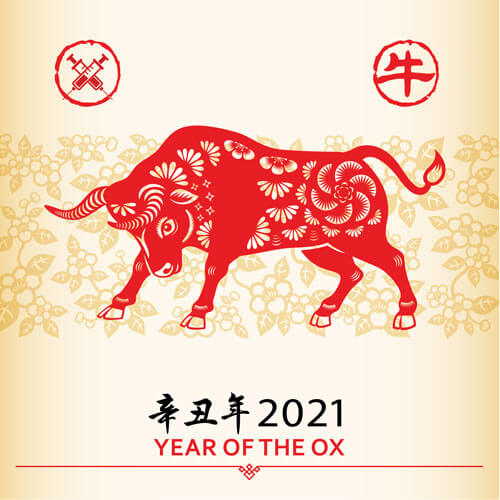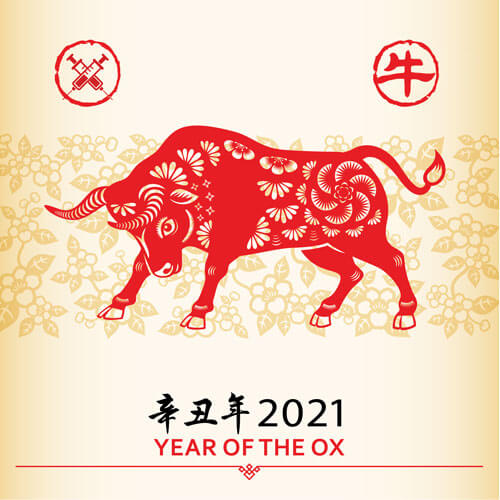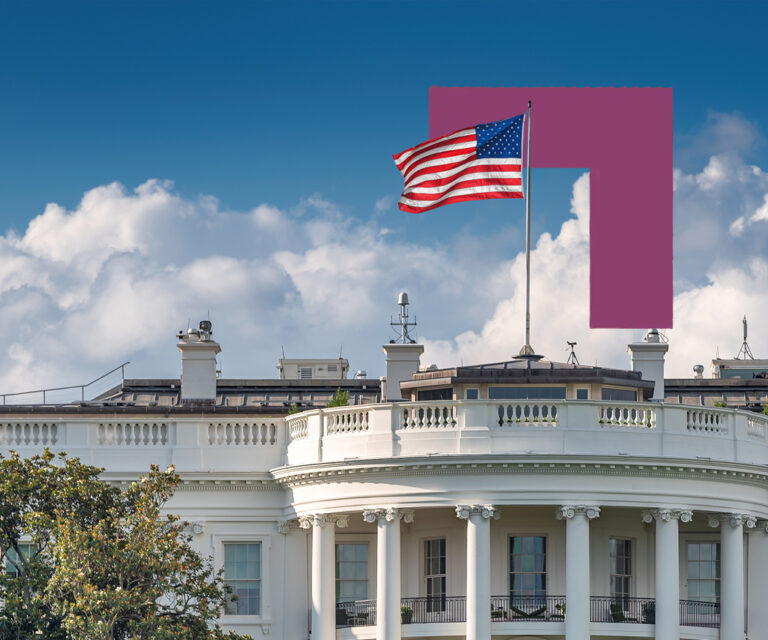-
And the Year of the Vax
February 12th marks the beginning of the Year of the Ox in the Lunar Calendar. In Chinese culture, Oxen are known for diligence, dependability, and determination. These are traits we will all need to rely on in the coming months while vaccine deployment proceeds at an ox-like pace. As we enter February, the depths of winter in the northern hemisphere, the pandemic shadow is once again darkening much of Europe and North America, and a weary populace may be forgiven a dream of spring.
Our analysis indicates that each region and country will follow a slightly different path to controlling COVID-19, but it is clear that the Year of the Ox will also be the Year of the Vax.

In economics, dreams like this are referred to as “rational expectations” since current views of future conditions underpin human behaviour in markets and society at large. Rational expectations theory plays an important role in understanding many macro-economic situations. How might this approach apply to the pandemic and epidemiological data? Although we are not experts in virology, we would like to share our analysis of pandemic data that points toward connections to economies and property markets.
In those nations which have borne the heaviest disease burden, uncertainties regarding the extent and durability of immunity conferred by prior exposure to COVID-19 have clouded forecasts and hence also expectations. Some insight may be drawn from a recent UK study, the first that rigorously looked at this question, which found that that having been previously infected does indeed confer strong protection. This recovered population may help to slow the spread of the disease alongside the deployment of effective vaccines. However, estimating the size of these recovered-immune populations means looking beyond official case counts, which have been biased by testing capacity that has varied considerably over time and place. On page four of this month’s Macro Deck, we examine estimates of total infections—symptomatic or not, tested or not—developed by the Institute for Health Metrics & Evaluation (IHME) at the University of Washington. Their model suggests that nearly a quarter of the population of some countries has already been infected.
Two nations which have endured a horrible pandemic experience—the U.S. and U.K.—have also played important roles in vaccine development and have secured large numbers of vaccine doses (see page five). Benefiting from an early start, they have been able to ramp up their vaccine programmes swiftly and are now immunising hundreds of thousands of people per day. Combined with a relatively large number of COVID survivors with presumed immunity, the U.S. and U.K. may well be on the way to gaining widespread population resistance to the coronavirus.
Diligence and determination also describe the successful response of the major Asia-Pacific economies to the pandemic. Meticulous traveller quarantines, testing protocols, and contact tracing systems will remain in place while the vaccine rollout begins. Some Asian governments have announced ambitious vaccination programmes that, when realised, would put them on track to be commensurate with some European and North American countries later in the year. Specifically, a new U.S. administration is putting comprehensive federal COVID-control measures in place for (effectively) the first time; plans to fund these measures are also moving rapidly. Meanwhile, the European Union has taken a stand to ensure that it gets its promised share of vaccine doses. The World Health Organization and Biden administration have also made moves to make sure economically disadvantaged countries get the vaccines they need. Remaining challenges include dealing with new variants of Covid-19, gaining a deeper understanding of immunity-through-infection, and conducting analysis of vaccination efficacy.
This will be the second consecutive Lunar New Year for which this normally bustling cross-border travel period remains constrained by the pandemic. Domestic travel in Asia is showing signs of a gradual return to near-normal, and progress has been made in the region with bilateral arrangements, sometimes known as “travel bubbles”, which are helping to facilitate some business travel. However, a return to frictionless inter-regional travel across Asia-Pacific, Africa, Europe, and the Americas will have to wait until the vaccination push is completed and its impacts are assessed.
The worst-hit countries in the West, having proven incapable or unwilling to control the virus through public health measures, may at least enjoy a hopeful future as population immunity levels rise. But ox-like strength will be needed to pull economies out of this pandemic recession. Our analysis indicates that each region and country will follow a slightly different path to controlling COVID-19, but it is clear that the Year of the Ox will also be the Year of the Vax.

Nov 19, 2024
ISA Outlook 2025
Shifting interest rates, dynamic occupier fundamentals, deepening bifurcation within sectors: how should real estate investors respond?




